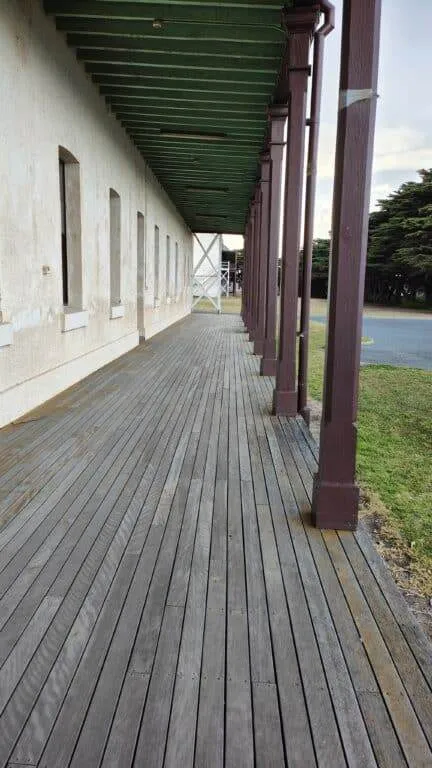The Point Nepean Quarantine Station, nestled on the scenic coastline of Victoria, Australia, stands as a testament to the country’s historical battle against infectious diseases. With a storied past dating back to the mid-19th century, this site has witnessed the ebb and flow of pandemics, played a crucial role in safeguarding public health, and evolved into a fascinating cultural and historical landmark.
I. Historical Background
Establishment and Purpose:
The Point Nepean Quarantine Station was established in 1852, during a period when infectious diseases such as smallpox and typhus posed significant threats to public health. The station was strategically located at the entrance of Port Phillip Bay, serving as the first line of defense against contagious diseases carried by immigrants arriving by sea.
Early Operations:
In its early years, the quarantine station accommodated ships arriving from various parts of the world, including Europe and Asia. Immigrants suspected of carrying infectious diseases were required to disembark and undergo a thorough health inspection before being allowed to enter the mainland. This stringent protocol aimed to prevent the spread of diseases within the Australian population.
II. Architectural Marvels of Point Nepean Quarantine Station
Heritage Buildings:
The quarantine station boasts a collection of well-preserved heritage buildings that showcase the architectural styles prevalent during the 19th and early 20th centuries. These structures include the Superintendent’s Residence, the Hospital, and the Bathing Pavilion, each with its unique design and historical significance.
Superintendent’s Residence:
Constructed in the Italianate architectural style, the Superintendent’s Residence served as the official residence for the head of the quarantine station. Its grandeur and meticulous design reflect the importance of the station in safeguarding public health and its role in the nation’s history.
Hospital:
The quarantine station’s hospital played a crucial role in treating and isolating individuals suffering from infectious diseases. The building’s architecture mirrors the medical practices of the time, providing insights into the evolution of healthcare during the 19th century.
Bathing Pavilion:
The Bathing Pavilion stands as a reminder of the emphasis on hygiene in the battle against infectious diseases. The design incorporates elements that facilitated the disinfection of people and their belongings, showcasing the innovative approaches taken to curb the spread of contagions.
III. Cultural Significance
Indigenous Connection:
Beyond its role in public health, the Point Nepean Quarantine Station holds cultural significance for the Indigenous communities in the region. The site was originally inhabited by the Boonwurrung people, and its history intertwines with their rich cultural heritage. Efforts have been made to acknowledge and preserve the Indigenous connection to the land, fostering a sense of unity and understanding.
Military Presence:
During the 20th century, the quarantine station took on a new identity as a military training ground. The military presence left its mark on the site, adding another layer to its historical tapestry. The remnants of military structures and the stories of those who served offer visitors a glimpse into this transformative period.
IV. Preservation Efforts
Heritage Victoria Recognition of Point Nepean Quarantine Station:
In recognition of its historical and architectural significance, the Point Nepean Quarantine Station has been listed on the Victorian Heritage Register. This acknowledgment highlights the importance of preserving the site for future generations and underscores its status as a cultural asset.
Community Involvement:
Preservation efforts extend beyond official recognition, with community groups actively involved in maintaining and promoting the quarantine station’s heritage. Volunteers contribute to conservation projects, guided tours, and educational programs, fostering a sense of community engagement and responsibility.
V. Visitor Experience
Guided Tours:
Visitors to the Point Nepean Quarantine Station have the opportunity to delve into its rich history through guided tours. Knowledgeable guides lead guests through the various buildings, sharing stories of the people who lived and worked there and providing insights into the challenges faced during times of epidemics.
Interpretive Exhibits:
Interpretive exhibits scattered throughout the site offer a multimedia experience, combining historical photographs, artifacts, and interactive displays. These exhibits enhance the visitor’s understanding of the quarantine station’s multifaceted history, making it an engaging and educational destination.
VI. Challenges and Controversies
Closure and Redevelopment:
In the latter part of the 20th century, the Point Nepean Quarantine Station ceased its operations, marking the end of its role in disease prevention. The closure led to debates about the site’s future use, with proposals ranging from residential development to conservation efforts. The challenges of striking a balance between preservation and adaptive reuse highlight the complexities associated with heritage sites.
Environmental Concerns:
Preserving the quarantine station goes beyond protecting its buildings; it involves safeguarding the surrounding natural environment. As the site attracts visitors, efforts must be made to mitigate the impact on the fragile coastal ecosystem and strike a sustainable balance between conservation and tourism.
VII. Conclusion
The Point Nepean Quarantine Station stands as a living testament to Australia’s historical struggle against infectious diseases, its architectural evolution, and the resilience of the communities it served. From its early role as a quarantine facility to its later identity as a military training ground, the site encapsulates layers of history that continue to shape the present. As efforts to preserve and celebrate this heritage unfold, the quarantine station invites visitors to explore its stories, appreciate its architectural marvels, and reflect on the enduring importance of public health in shaping nations.







